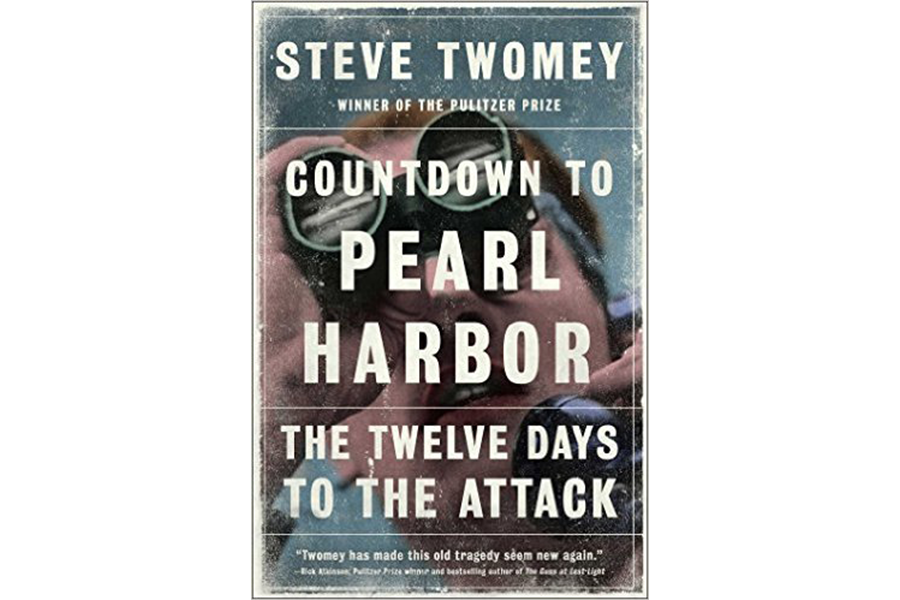3 excellent new books on Pearl Harbor
Loading...
This year marks the 75th anniversary of the surprise attack on Pearl Harbor by the Empire of Japan in December of 1941. Probably fewer than 2000 survivors of the attack are still alive. With every year, the event slips further away from living memory and further into the history books, where it will be analyzed and re-analyzed as one of the most pivotal moments of 20th-century history, when the war that had been raging for years in Europe and throughout the Pacific finally reached the United States.
Every publishing season sees a batch of such history books, and 2016's autumn features three outstanding examples, each looking at the events of Pearl Harbor from a different perspective.
Pulitzer Prize-winning Washington Post reporter Steve Twomey, in his nonfiction debut Countdown to Pearl Harbor: The Twelve Days to the Attack, concentrates on the long prelude to December 7. Marshaling a comprehensive array of primary sources, he takes his readers into the two weeks of intense decision-making on the part of the Japanese military leaders as they contemplated an operation whose scale and difficulty were mind-boggling. An attack group consisting of six aircraft carriers would sail over 3,000 miles of open water in order to get close enough to the US Navy air base at Pearl; in order to hide its movements, the strike force would need to be refueled at sea, and the whole operation would be vulnerable to detection the entire time. “The Japanese, of course, had sifted the military negatives,” Twomey writes. “The astounding distance. The complexities of refueling while underway. The risk of calamitous discovery. They had calculated the odds they could pull off such a raid as … fifty-fifty, perhaps a little better.” Japanese Admiral Yamamoto, we're told liked those odds.
Those odds were tragically increased by the complacency of Pearl Harbor's commander, Admiral Husband Kimmel, a distinguished officer Twomey describes as “navy classic, raised on big-gun platforms.” Kimmel had seen plenty of hypotheticals and heard plenty of chatter, but at the end of all of it, he'd “arrived at the conclusion that an air attack on Pearl Harbor was not probable.” (Another of the season's outstanding books on the subject, "A Matter of Honor" by Anthony Summers and Robbyn Swan, digs far more deeply into the whole question of Kimmel's guilt or innocence.)
In Pearl Harbor: From Infamy to Greatness, his gripping account of the attack itself, veteran historian Craig Nelson picks up on that sense of confident impregnability at Pearl. “With twenty-twenty hindsight,” he writes, “it is mystifying to read again and again of how insistent military officers in Hawaii were before December 7 that nothing was a threat to them, but this was in fact a broadly held sentiment in the United States before the attack on Pearl Harbor.” Right up until 7:48 a.m when the first wave of 183 attack planes began strafing and bombing the US battleships sitting peacefully in their berths, the conventional thinking was that no enemy fleet of sufficient size to pose any real threat to Pearl could manage to cross such a vast distance completely undetected, particularly given the difficult of refueling in the stormy North Pacific, which Nelson describes as “backbreaking, dangerous work.”
Like Twomey, Nelson infuses his account with the primary-source memories of the people involved, giving his book a tense, epic feel reminiscent of the best general histories of the event, books like John Toland's "Infamy," Walter Lord's "Day of Infamy," and the still-unbeaten masterpiece on the subject, "At Dawn We Slept" by Gordon Prange and Donald Goldstein. And Nelson is careful to remind his readers of the bigger picture: “The attack on Pearl Harbor,” he points out, “was for Japan at that moment merely a preemptive strike, a minor sideshow to Operation Number One.”
Operation Number One, what Nelson calls “one of the greatest military operations of all time,” called for near-simultaneous attack-waves of invasion striking not just Oahu but Malaya, Singapore, Burma, the Philippines, Wake, Guam, Borneo, and Java, and something of the amazing reach of this plan is captured in Nicholas Best's excellent new book Seven Days of Infamy: Pearl Harbor Across the World, in which he not only recounts many dozens of contemporary reactions to the attack but also places Pearl Harbor in the broader context of the Pacific war that swept out of Japan that winter. “Wherever they were in the world,” Best writes, “millions of people stopped what they were doing to absorb the news” – from Ronald Reagan to a young Jack Kennedy to Ernest Hemingway and Mao Tse-tung, Best finds dozens of these fascinating reactions, but the real strength of his book – what makes it in many ways the most interesting of these three – lies in its taut sense of the wider impact the Japanese attacks had internationally, from Ottawa to Canberra.
The faint echoes of those attacks have all but faded in the present day, but in histories this varied and this lively, they can be heard sharp and clear by a new generation of readers.








